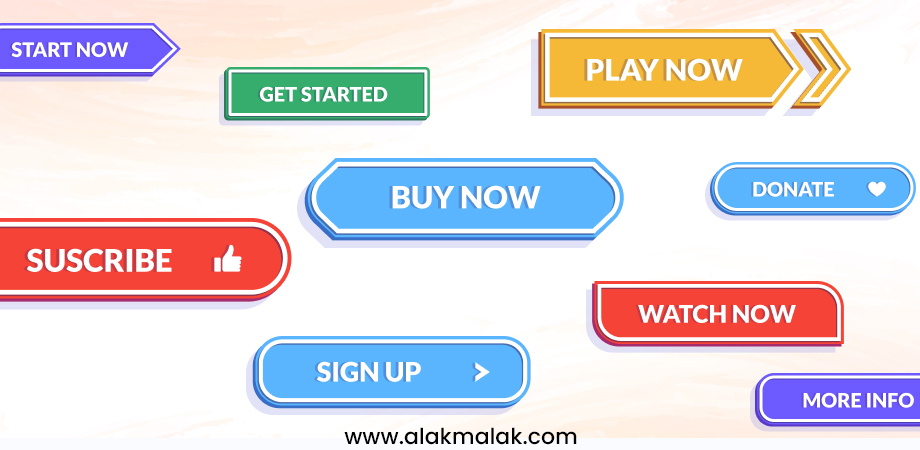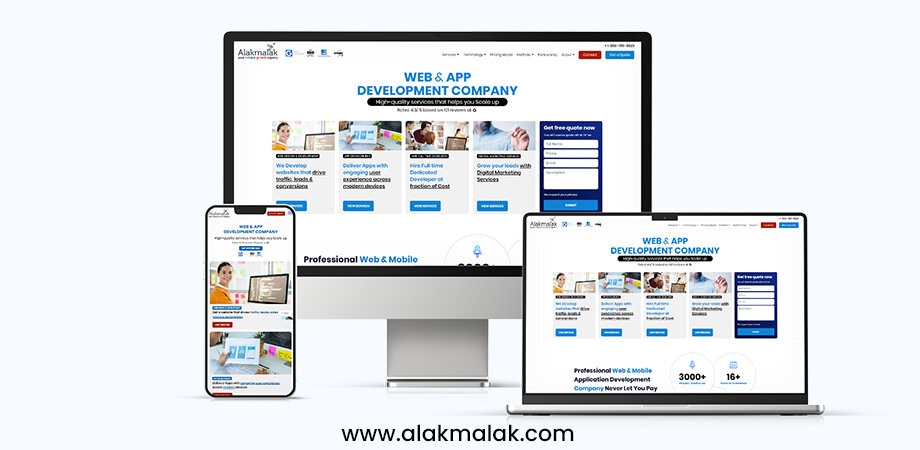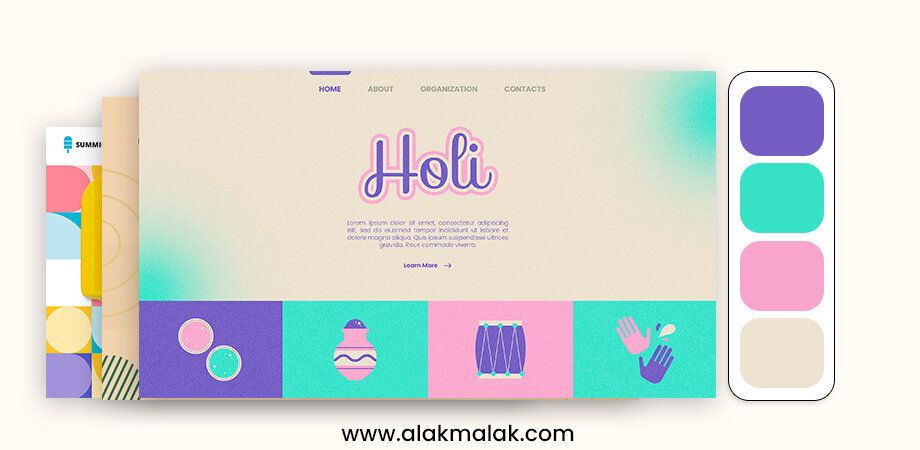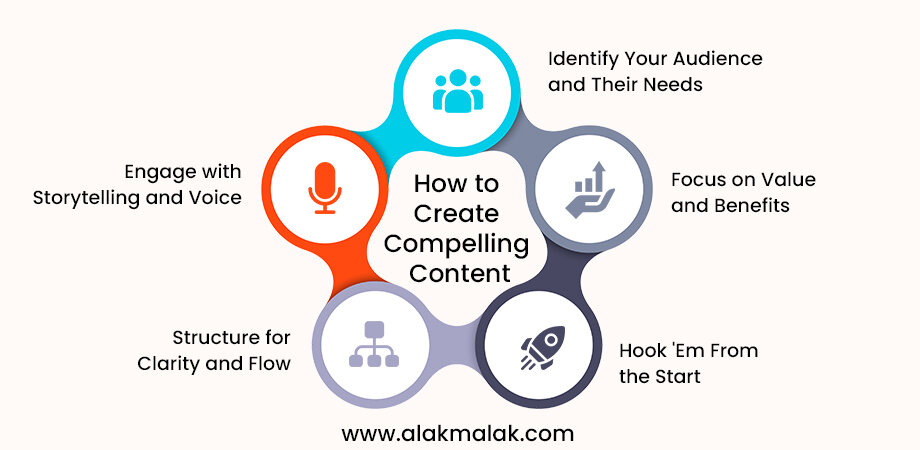Did you know that users form an opinion about a website within 50 milliseconds? That’s right – in less time than it takes to blink, visitors have already judged your site. With attention spans shorter than ever, crafting a well-designed website is critical for leaving a positive first impression and capturing potential customers.
Building an online presence is essential for any business today, but a poorly designed website can do more harm than good. A confusing layout, outdated aesthetics, and sluggish performance can drive visitors away before they even explore what you have to offer.
That’s where this guide comes in. Over the next few sections, we’ll dive into proven strategies for getting your website design right – from layout and navigation to visuals and responsiveness. By following these tips, you’ll be able to create a website that not only looks great but also provides an exceptional user experience, helping you stand out in today’s crowded online landscape.
With 18 years of experience as a top website design company in India and a portfolio of successful client projects, we’ve learned what it takes to create high-performing websites that engage visitors and drive results. Get ready to take your online presence to new heights!
8 Tips For Getting The Website Design Right
TABLE OF CONTENT
1. Conquering SEO
2. Email Marketing
3. Effective CTA
4. Use Social Media Platforms
5. User-Friendly Navigation
6. Mobile-Friendly Website Design
7. Winning Color Schemes
8. Create Compelling Content
Tools and Resources
Case Study: How a Small Business Transformed Its Online Presence
Unlock Your Website’s Full Potential: Embrace Expert Guidance Today
1. Conquering SEO
Search engine optimization (SEO) is the practice of optimizing your website to rank higher in search engine results and drive more organic traffic to your site. In today’s digital landscape, having a strong SEO strategy is crucial for any business looking to establish a successful online presence.
Why it’s Important
According to a recent study by BrightEdge, over 53% of website traffic comes from organic search results. This means that if your website isn’t optimized for search engines, you’re missing out on a massive opportunity to reach potential customers. Furthermore, research by Sistrix shows that the top three Google search results capture approximately 75% of all clicks, highlighting the importance of ranking well.
How to Implement
To conquer SEO and improve your website’s search rankings, follow these actionable steps:
- Conduct thorough keyword research to identify relevant, high-traffic keywords to target
- Optimize your website’s content, headings, meta descriptions, and image alt tags with these keywords
- Build high-quality backlinks from reputable websites to improve your site’s authority
- Ensure your website is mobile-friendly and loads quickly for optimal user experience
- Monitor and analyze your website’s performance using tools like Google Analytics and Google Search Console
2. Email Marketing
Email marketing is a powerful tool for businesses to connect with their audience, nurture leads, and drive conversions. In the context of website design, having an effective email marketing strategy can help you build a loyal customer base and maximize the impact of your online presence.
Why it’s Important
According to Oberlo, email marketing has an average return on investment (ROI) of $36 for every $1 spent, making it one of the most cost-effective marketing channels available. Furthermore, a study by Monetate reveals that email marketing drives around 20% of all eCommerce transactions.
How to Implement
To leverage the power of email marketing for your website, follow these actionable steps:
- Prominently display email opt-in forms on your website, such as in the header, sidebar, or footer
- Offer incentives like discounts, free resources, or exclusive content to encourage email signups
- Segment your email list based on subscriber interests, behaviors, or demographics for personalized messaging
- Create a welcome email series to nurture new subscribers and introduce your brand
- Craft compelling email campaigns with valuable content, clear calls-to-action, and responsive design
- Analyze metrics like open rates, click-through rates, and conversions to continually optimize your campaigns
3. Effective CTA
A call-to-action (CTA) is a crucial element in website design, guiding visitors towards taking the desired action, whether it’s making a purchase, signing up for a newsletter, or scheduling a consultation. Crafting effective CTAs is key to converting website visitors into leads and customers.
Why it’s Important
CTAs play a pivotal role in driving conversions and achieving your website’s goals. According to a study by HubSpot, websites with well-designed CTAs can experience a 28% increase in lead generation. Furthermore, research by Unbounce reveals that a compelling CTA can increase conversion rates by 185%.
How to Implement
To create effective CTAs that drive action, follow these actionable steps:
- Use actionable and persuasive language that creates a sense of urgency (e.g., “Sign Up Now,” “Get Your Free Quote Today”)
- Make your CTAs visually prominent by using contrasting colors, white space, and strategic placement
- Ensure your CTAs are clear, concise, and convey the value proposition to the user
- Place CTAs strategically throughout your website, particularly on high-traffic pages and at natural conversion points
- Test different CTA designs, copy, and placements to optimize for maximum conversions
4. Use Social Media Platforms
In today’s digital age, social media platforms have become an integral part of any successful online presence. These platforms provide businesses with a powerful way to connect with their target audience, build brand awareness, and drive traffic to their website.
Why it’s Important
According to a study by Hootsuite, over 58% of the world’s population uses social media, making it an invaluable channel for reaching potential customers. Furthermore, research by Sprout Social indicates that 91% of consumers visit a brand’s website or app after interacting with them on social media.
How to Implement
To effectively leverage social media platforms for your website, follow these actionable steps:
- Identify the platforms your target audience is most active on (e.g., Facebook, Instagram, Twitter, LinkedIn)
- Create engaging social media content that aligns with your brand voice and resonates with your audience
- Include links to your website in your social media bios, posts, and stories to drive traffic
- Utilize social media advertising to reach a broader audience and promote your website’s content or offerings
- Monitor and engage with your followers by responding to comments, questions, and mentions
- Analyze social media metrics to understand what resonates with your audience and optimize your strategy accordingly
5. User-Friendly Navigation
Website navigation refers to the system that allows users to move between different pages and sections of a website. User-friendly navigation is crucial for ensuring a smooth and enjoyable browsing experience, making it easier for visitors to find what they’re looking for and achieve their goals.
Why it’s Important
Poor navigation can lead to frustration, confusion, and a high bounce rate, which can negatively impact your website’s performance and user engagement. According to a study by web usability consultant Jakob Nielsen, users spend 80% of their time looking for information on websites, emphasizing the importance of intuitive navigation.
How to Implement
To create user-friendly navigation for your website, follow these actionable steps:
- Use clear and descriptive labels for your navigation menus and links
- Implement a logical and consistent navigation structure across your website
- Utilize visual cues like breadcrumbs to help users understand their current location
- Optimize your website’s search functionality for easy content discovery
- Ensure your navigation is responsive and adaptable to different devices and screen sizes
- Conduct usability testing to identify and address any navigation issues
6. Mobile-Friendly Website Design
In today’s digital landscape, where mobile devices have become ubiquitous, ensuring that your website is optimized for various screen sizes and device types is no longer just a nice-to-have feature but a necessity. A mobile-friendly website design ensures that visitors can easily access and navigate your site, regardless of whether they’re using a smartphone, tablet, or desktop computer.
Why it’s Important
According to Google, 61% of users are unlikely to return to a mobile site they had trouble accessing, and 40% will visit a competitor’s site instead. Furthermore, a study by OuterBoxDesign found that 57% of internet users say they won’t recommend a business with a poorly designed mobile site.
How to Implement
To create a mobile-friendly website design, follow these actionable steps:
- Implement responsive web design techniques that automatically adjust your site’s layout and content to fit different screen sizes
- Prioritize content hierarchy and simplify navigation for smaller screens
- Optimize images and media for faster loading times on mobile devices
- Ensure touch-friendly elements, such as larger buttons and menus, for easy navigation
- Test your website’s mobile experience across various devices and platforms
- Consider developing a progressive web app (PWA) for a more app-like experience on mobile devices
7. Winning Color Schemes
Color is a powerful design element that can significantly impact the overall look, feel, and user experience of a website. Choosing the right color palette is crucial for creating a visually appealing and cohesive design that resonates with your target audience and effectively communicates your brand’s personality and values.
Why it’s Important
According to a study by the University of Winnipeg, people make up their minds within 90 seconds of their initial interactions with either people or products, and up to 90% of that assessment is based on color alone. Additionally, research by Kissmetrics revealed that color increases brand recognition by 80%.
How to Implement
To create winning color schemes for your website, follow these actionable steps:
- Understand color psychology and the meanings and emotions associated with different colors
- Choose a primary color that aligns with your brand’s personality and message
- Select complementary colors that create a visually appealing and harmonious palette
- Ensure sufficient contrast between text and background colors for optimal readability
- Use color strategically to draw attention to important elements like calls-to-action (CTAs)
- Maintain color consistency throughout your website to reinforce brand recognition
8. Create Compelling Content
Content is the backbone of any website, as it provides value, information, and engagement for visitors. Creating compelling content is essential for capturing and retaining user attention, establishing your brand’s authority, and ultimately achieving your website’s goals, whether it’s driving sales, generating leads, or providing valuable information.
Why it’s Important
According to a study by Demand Metric, content marketing costs 62% less than traditional marketing and generates about 3 times as many leads. Furthermore, research by HubSpot revealed that companies that prioritize blogging efforts are 13 times more likely to see positive return on investment (ROI).
How to Implement
To create compelling content for your website, follow these actionable steps:
- Conduct thorough research to understand your target audience’s needs, pain points, and interests
- Develop a content strategy that aligns with your business goals and target audience
- Create a variety of content types, such as blog posts, videos, infographics, and whitepapers, to cater to different preferences
- Ensure your content is well-written, informative, and engaging, using storytelling techniques and relevant examples
- Optimize your content for search engines by incorporating relevant keywords and following on-page SEO best practices
- Regularly update and refresh your content to keep it relevant and valuable
Tools and Resources
Here are some tools, resources, and software that can help readers design a successful website and achieve their goals, along with recommendations for further reading and low-cost/free resources:
Tools and Resources:
- Website Builders (e.g., Wix, Squarespace, Weebly) – These user-friendly platforms offer drag-and-drop interfaces, pre-designed templates, and various customization options, making it easy for beginners to create professional-looking websites without coding knowledge.
- Content Management Systems (CMS) (e.g., WordPress, Joomla, Drupal) – CMSs provide a more flexible and scalable solution for website management, allowing you to easily create, edit, and publish content, as well as integrate various plugins and functionalities.
- Design Tools (e.g., Canva, Adobe Creative Cloud, Sketch) – These tools can help you create visually appealing graphics, logos, and other design elements for your website, even if you’re not a professional designer.
- Stock Image and Video Resources (e.g., Unsplash, Pexels, Videvo) – Access high-quality, free stock images and videos to enhance your website’s visual appeal.
- User Testing and Feedback Tools (e.g., Hotjar, Crazy Egg, UserTesting.com) – Gather valuable insights into user behavior, identify pain points, and optimize your website’s design and user experience accordingly.
Further Reading and Additional Information:
- “Don’t Make Me Think” by Steve Krug – A classic book on web usability and user experience design.
- Smashing Magazine (https://www.smashingmagazine.com/) – A popular online magazine dedicated to web design, coding, and development.
- Web Design Library (https://www.webdesignlibrary.com/) – A comprehensive resource for web designers, with articles, tutorials, and tools.
Free or Low-Cost Resources:
- Google’s Web Fundamentals (https://developers.google.com/web/fundamentals) – A free resource from Google that covers best practices for building modern web experiences.
- W3Schools – A free online web tutorial that covers a wide range of web development topics.
- Freepik – A source for free and premium vector graphics, icons, and illustrations.
- Bootstrap – A popular open-source front-end framework for building responsive and mobile-first websites.
By taking advantage of these tools, resources, and recommendations, readers can streamline the website design process, create a visually appealing and user-friendly online presence, and stay up-to-date with the latest trends and best practices in web design.
Case Study: How a Small Business Transformed Its Online Presence
The Challenge:
Green Thumb Nursery, a local plant nursery and gardening supply store, had been in business for over 20 years but struggled to keep up with the digital age. Their website was outdated, difficult to navigate, and failed to capture the essence of their brand. As a result, they were losing customers to larger, more established competitors with a strong online presence.
The Solution:
Recognizing the importance of a well-designed website, the owners of Green Thumb Nursery embarked on a website redesign project, implementing the strategies outlined in this blog post.
- User-Friendly Navigation: They simplified their website’s navigation, using clear labels and a logical structure, making it easy for visitors to find what they were looking for.
- Mobile Responsiveness: Ensuring their website was optimized for all devices, including smartphones and tablets, was a top priority.
- Compelling Content: They revamped their website’s content, creating engaging blog posts, informative product descriptions, and helpful gardening guides, establishing themselves as industry experts.
- Effective Calls-to-Action (CTAs): Strategic placement of CTAs throughout the website, encouraging visitors to make purchases, sign up for their newsletter, or schedule consultations, was a key focus.
- Winning Color Schemes: A fresh, nature-inspired color palette was chosen to align with their brand’s personality and create a visually appealing experience.
The Results:
Within six months of launching their redesigned website, Green Thumb Nursery saw remarkable results:
- Online sales increased by 35%
- Newsletter subscriptions grew by 62%
- Website traffic doubled, with a significant decrease in bounce rate
- Social media engagement and brand awareness soared
The owner, Sarah, shared, “Investing in our website design was one of the best decisions we made. Not only did it revitalize our online presence, but it also helped us better connect with our customers and showcase our expertise in the gardening community.”
Key Learnings:
- A well-designed, user-friendly website is crucial for attracting and retaining customers in today’s digital landscape.
- Implementing strategies like mobile responsiveness, compelling content, and effective CTAs can significantly improve user engagement and drive conversions.
- Aligning your website’s design with your brand’s personality and values can create a memorable and cohesive experience for visitors.
- Continuously monitoring and optimizing your website’s performance is essential for sustained success.
By following the principles outlined in this blog post and learning from real-life success stories like Green Thumb Nursery, businesses can create a powerful online presence that resonates with their target audience and drives tangible results.
Unlock Your Website’s Full Potential: Embrace Expert Guidance Today
Throughout this guide, we’ve explored the essential elements of creating a successful online presence through exceptional website design. As we wrap up, let’s revisit the key takeaways and outline the next steps to elevate your website to new heights.
Main Takeaways:
- User-centric design is paramount: Crafting a website that resonates with your target audience requires a deep understanding of their needs, preferences, and behaviors. User research and testing should be at the core of your design process.
- Seamless user experience is king: A visually stunning website means nothing if it fails to deliver a seamless and intuitive user experience. Prioritize usability, navigation, and accessibility to ensure your visitors can effortlessly find what they’re looking for.
- Responsive design is non-negotiable: In today’s multi-device world, your website must be optimized for all screen sizes and platforms. Responsive design ensures a consistent and engaging experience across desktops, tablets, and mobile devices.
- Continuous improvement is crucial: Website design is an ongoing process. Regularly analyze user data, feedback, and industry trends to identify areas for improvement and stay ahead of the competition.
Next Steps:
Armed with these insights, it’s time to take action and elevate your online presence to new heights. Whether you’re building a new website or revamping an existing one, implementing these principles can significantly impact user engagement, conversion rates, and overall business success.
However, we understand that navigating the complexities of website design can be daunting, especially in today’s rapidly evolving digital landscape. That’s why we encourage you to seek expert guidance and leverage the knowledge and experience of professionals in the field.
Are you ready to unlock your website’s full potential and create a truly remarkable online presence? Contact us today for a comprehensive consultation. Our team of website design experts will work closely with you to understand your unique business goals, target audience, and industry challenges.
Together, we’ll craft a tailored strategy that combines user-centric design, seamless user experience, responsive layouts, and continuous optimization. Trust our expertise to guide you through every step of the process, from initial concept to successful launch and beyond.
Don’t settle for a mediocre online presence – embrace the power of exceptional website design and watch as your business thrives in the digital realm. Reach out now, and let’s embark on a journey towards online success.

 By: Rushik Shah
By: Rushik Shah







